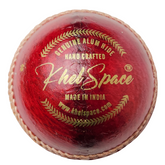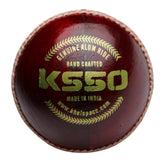"The Complete History of Olympic Boxing: Champions, Records, and Global Impact (1960-2024)"
The Complete History of Olympic Boxing (1960-2024)
Boxing is one of the most historic sports in the Olympic Games, showcasing the best fighters from around the world since its inclusion in the ancient Olympic Games. This blog will provide a comprehensive overview of Olympic boxing from 1960 to 2024, covering the categories, notable athletes, and their achievements.
The Evolution of Olympic Boxing
Boxing's Early Days
The sport has been a part of the modern Olympics since the 1904 St. Louis Games, though it wasn't included in the 1912 Stockholm Games due to Sweden's ban on boxing. Initially, only male athletes competed, and the format of the competition has evolved over the years, with different weight classes being added or modified.
Introduction of Women’s Boxing
The 2012 London Olympics marked a historic moment for boxing when women were allowed to compete for the first time. Initially, only three weight categories were included, but the number expanded in subsequent Olympics.
Men's Boxing Categories
Boxing categories have evolved, but the key classes remain. Here’s a breakdown of the men's boxing categories from 1960 to 2024:
-
Flyweight (51 kg and below): Known for its speed and agility, this class has produced some of the most exciting bouts in Olympic history.
-
Bantamweight (52-57 kg): Often featuring fighters with a balance of speed and power, this category has seen legendary athletes rise to prominence.
-
Featherweight (57-60 kg): Combining speed, endurance, and technique, the featherweight category has been one of the most competitive.
-
Lightweight (60-64 kg): This category has showcased some of the most skilled technical boxers in Olympic history.
-
Welterweight (64-69 kg): Known for its balance of strength and speed, this category has seen fierce competition over the decades.
-
Middleweight (69-75 kg): A blend of power and technique, the middleweight division has been a launching pad for future professional champions.
-
Light Heavyweight (75-81 kg): A category where raw power often meets refined skill, producing many memorable Olympic moments.
-
Heavyweight (81-91 kg): The powerhouses of boxing, this category features some of the hardest hitters in the sport.
-
Super Heavyweight (91+ kg): The largest athletes compete in this category, often delivering knockouts and thrilling finishes.
Women’s Boxing Categories
Since 2012, women’s boxing has expanded, showcasing incredible talent across several weight classes:
-
Flyweight (48-51 kg): The inaugural women’s boxing category in 2012, known for its quick and technical fights.
-
Featherweight (54-57 kg): Introduced later, this category features a mix of speed and power.
-
Lightweight (57-60 kg): Often dominated by versatile fighters, this class is one of the most competitive.
-
Welterweight (64-69 kg): A category for fighters who combine strength with strategic prowess.
-
Middleweight (69-75 kg): Featuring some of the strongest women in boxing, this category often showcases high-level technical skill.
-
Light Heavyweight (75-81 kg): A category that blends speed, power, and technique.
-
Heavyweight (81+ kg): The most powerful women boxers compete here, with strength being a key factor.
Notable Olympic Boxing Achievements
Historic Moments:
- Muhammad Ali (Cassius Clay) won gold in 1960 as a light heavyweight, setting the stage for his legendary career.
- Teófilo Stevenson of Cuba won three consecutive gold medals (1972, 1976, 1980), becoming one of the most decorated boxers in Olympic history.
- Nicola Adams became the first female boxer to win an Olympic gold medal in 2012, representing Great Britain.
Recent Champions:
- Vasiliy Lomachenko (UKR) won gold in both 2008 and 2012, known for his impeccable technique and skill.
- Clarissa Shields (USA) became the first American boxer to win two consecutive Olympic golds in 2012 and 2016.
Future of Olympic Boxing
As boxing continues to evolve, the sport faces challenges and opportunities. The introduction of women’s boxing has expanded the sport's reach, while changes in amateur rules and scoring have modernized the competition. With each Olympic cycle, new talents emerge, and the sport continues to inspire millions.
India's Rising Star: India has seen a rise in boxing talent, with athletes like Mary Kom, who won bronze in 2012, and Lovlina Borgohain, who secured a bronze in 2020, paving the way for future champions. The future looks bright as more young talents emerge, and the country invests in better facilities and training.
Men's
- 1904: up to 105 lb (47.6 kg)
- 1920–1936: up to 112 lb (50.8 kg)
- 1948–1964: up to 51 kg
- 1968–2008: 48–51 kg
- 2012–2020: 49–52 kg
- 2024–present: –51 kg
- Notes
-
^
The original silver medalist, Misha Aloyan of
 Russia, was disqualified after testing positive for tuaminoheptane.[1]
Russia, was disqualified after testing positive for tuaminoheptane.[1]
- 1904: 115–125 lb (52.2–56.7 kg)
- 1908: 116–126 lb (52.6–57.2 kg)
- 1920–1928: 118–126 lb (53.5–57.2 kg)
- 1932–1936: 119–126 lb (54.0–57.2 kg)
- 1948: 54–58 kg
- 1952–2008: 54–57 kg
- 2020–present: 52–57 kg
- 1904: 125–135 lb (56.7–61.2 kg)
- 1908: 126–140 lb (57.2–63.5 kg)
- 1920–1936: 126–135 lb (57.2–61.2 kg)
- 1948: 58–62 kg
- 1952–2008: 57–60 kg
- 2012–2020: 56–60 kg
- 2024–present: 58–63.5 kg
- 1904: 135–145 lb (61.2–65.8 kg)
- 1920–1936: 135–147 lb (61.2–66.7 kg)
- 1948: 62–67 kg
- 1952–2000: 63.5–67 kg
- 2004–2020: 64–69 kg
- 2024–present: 64–71 kg
- 1904: 145–158 lb (65.8–71.7 kg)
- 1908: 140–158 lb (63.5–71.7 kg)
- 1920–1936: 147–160 lb (66.7–72.6 kg)
- 1948: 67–73 kg
- 1952–2000: 71–75 kg
- 2004–2020: 69–75 kg
- 2024–present: 72–80 kg
- 1904–1908: over 158 lb (71.7 kg)
- 1920–1936: over 175 lb (79.4 kg)
- 1948: over 80 kg
- 1952–1980: over 81 kg
- 1984–present: 81–92 kg
- 1984–2020: over 91 kg
- 2024–present: over 92 kg
Women's
Flyweight
Bantamweight
| Games | Gold | Silver | Bronze |
|---|---|---|---|
|
2024 Paris details |
Chang Yuan |
Hatice Akbaş |
Pang Chol-mi Im Ae-ji |
Featherweight
Lightweight
Welterweight
Middleweight
-
As of the 2024 Summer Olympics, considering stripped and reallocated medals as of 31 December 2021.
| Rank | Nation | Gold | Silver | Bronze | Total |
|---|---|---|---|---|---|
| 1 |
|
50 | 27 | 41 | 118 |
| 2 |
|
42 | 19 | 19 | 80 |
| 3 |
|
20 | 15 | 28 | 63 |
| 4 |
|
15 | 15 | 18 | 48 |
| 5 | 14 | 19 | 18 | 51 | |
| 6 |
|
10 | 5 | 15 | 30 |
| 7 |
|
10 | 2 | 8 | 20 |
|
|
10 | 2 | 8 | 20 | |
| 9 |
|
8 | 10 | 26 | 44 |
| 10 |
|
7 | 8 | 11 | 26 |
| 11 |
|
7 | 7 | 10 | 24 |
| 12 |
|
6 | 11 | 11 | 28 |
| 13 |
|
6 | 7 | 6 | 19 |
| 14 |
|
6 | 4 | 9 | 19 |
| 15 |
|
5 | 5 | 10 | 20 |
| 16 |
|
5 | 4 | 7 | 16 |
| 17 | 5 | 2 | 6 | 13 | |
| 18 |
|
4 | 9 | 11 | 24 |
| 19 |
|
4 | 5 | 10 | 19 |
| 20 |
|
4 | 4 | 8 | 16 |
| 21 |
|
3 | 7 | 11 | 21 |
| 22 |
|
3 | 7 | 8 | 18 |
| 23 | 3 | 2 | 6 | 11 | |
| 24 | 3 | 1 | 2 | 6 | |
| 25 |
|
3 | 0 | 5 | 8 |
| 26 |
|
2 | 4 | 8 | 14 |
| 27 |
|
2 | 3 | 4 | 9 |
| 28 |
|
2 | 2 | 5 | 9 |
| 29 |
|
2 | 1 | 13 | 16 |
| 30 |
|
2 | 0 | 5 | 7 |
| 31 |
|
1 | 9 | 15 | 25 |
| 32 |
|
1 | 5 | 6 | 12 |
| 33 |
|
1 | 5 | 4 | 10 |
| 34 | 1 | 3 | 2 | 6 | |
|
|
1 | 3 | 2 | 6 | |
| 36 |
|
1 | 2 | 5 | 8 |
| 37 |
|
1 | 2 | 4 | 7 |
| 38 |
|
1 | 2 | 2 | 5 |
| 39 |
|
1 | 1 | 5 | 7 |
| 40 | 1 | 1 | 4 | 6 | |
| 41 |
|
1 | 1 | 2 | 4 |
|
|
1 | 1 | 2 | 4 | |
| 43 | 1 | 0 | 5 | 6 | |
| 44 |
|
1 | 0 | 3 | 4 |
|
|
1 | 0 | 3 | 4 | |
| 46 |
|
0 | 5 | 6 | 11 |
| 47 |
|
0 | 4 | 6 | 10 |
| 48 |
|
0 | 3 | 3 | 6 |
|
|
0 | 3 | 3 | 6 | |
| 50 |
|
0 | 3 | 1 | 4 |
| 51 |
|
0 | 2 | 8 | 10 |
| 52 |
|
0 | 2 | 0 | 2 |
| 53 |
|
0 | 1 | 6 | 7 |
| 54 |
|
0 | 1 | 5 | 6 |
| 55 |
|
0 | 1 | 4 | 5 |
| 56 |
|
0 | 1 | 3 | 4 |
|
|
0 | 1 | 3 | 4 | |
| 58 |
|
0 | 1 | 2 | 3 |
| 59 |
|
0 | 1 | 1 | 2 |
| 0 | 1 | 1 | 2 | ||
| 61 | 0 | 1 | 0 | 1 | |
|
|
0 | 1 | 0 | 1 | |
|
|
0 | 1 | 0 | 1 | |
|
|
0 | 1 | 0 | 1 | |
|
|
0 | 1 | 0 | 1 | |
|
|
0 | 1 | 0 | 1 | |
| 67 |
|
0 | 0 | 4 | 4 |
| 68 |
|
0 | 0 | 3 | 3 |
| 69 |
|
0 | 0 | 2 | 2 |
|
|
0 | 0 | 2 | 2 | |
|
|
0 | 0 | 2 | 2 | |
|
|
0 | 0 | 2 | 2 | |
|
|
0 | 0 | 2 | 2 | |
| 74 |
|
0 | 0 | 1 | 1 |
|
|
0 | 0 | 1 | 1 | |
|
|
0 | 0 | 1 | 1 | |
|
|
0 | 0 | 1 | 1 | |
|
|
0 | 0 | 1 | 1 | |
|
|
0 | 0 | 1 | 1 | |
|
|
0 | 0 | 1 | 1 | |
|
|
0 | 0 | 1 | 1 | |
|
|
0 | 0 | 1 | 1 | |
|
|
0 | 0 | 1 | 1 | |
|
|
0 | 0 | 1 | 1 | |
|
|
0 | 0 | 1 | 1 | |
| Totals (85 entries) | 278 | 278 | 492 | 1,048 | |
Conclusion: A Legacy of Olympic Boxing Excellence
The history of Olympic boxing is a testament to the skill, determination, and global reach of the sport. As of the 2024 Summer Olympics, the United States leads with an impressive 118 medals, including 50 golds, reflecting its longstanding dominance. Cuba, with 42 golds, remains a powerhouse, particularly in the lighter weight classes. Great Britain, Italy, and the Soviet Union have also left an indelible mark, contributing significantly to the sport’s rich legacy.
Countries like Russia, Uzbekistan, and Hungary have produced standout boxers, each earning multiple golds and maintaining strong traditions in the ring. Emerging nations like Kazakhstan and China have risen in prominence, highlighting the sport’s evolving landscape. The inclusion of women’s boxing since 2012 has further diversified the competition, adding new dimensions to Olympic boxing.
The distribution of medals across 85 nations, with a total of 1,048 medals awarded, underscores boxing’s global appeal. While traditional boxing nations continue to excel, the sport’s reach is expanding, with countries like India, Brazil, and Ireland gaining prominence on the world stage.
Looking forward, Olympic boxing promises to continue evolving, with new talents emerging from both established and rising nations. The sport’s future will be shaped by its rich history, competitive spirit, and the unwavering dedication of athletes worldwide.
Credits
The tables and data presented in this blog, including the detailed list of Olympic boxing medalists and rankings, were sourced from Wikipedia. For further information and to explore the complete dataset, you can visit the original Wikipedia page on Olympic medalists in boxing.
This acknowledgment ensures proper credit is given to the contributors and editors who have compiled and maintained this valuable resource on Olympic boxing history.
Disclaimer
The information provided in this blog is intended for general informational purposes only. While efforts have been made to ensure the accuracy and completeness of the content, it is not guaranteed. The data, particularly the tables and rankings, have been sourced from Wikipedia and other publicly available resources, and the blog author does not claim ownership of this information. Readers are encouraged to consult original sources or professional guidance for detailed and precise information. The author is not responsible for any inaccuracies or omissions in this blog.








